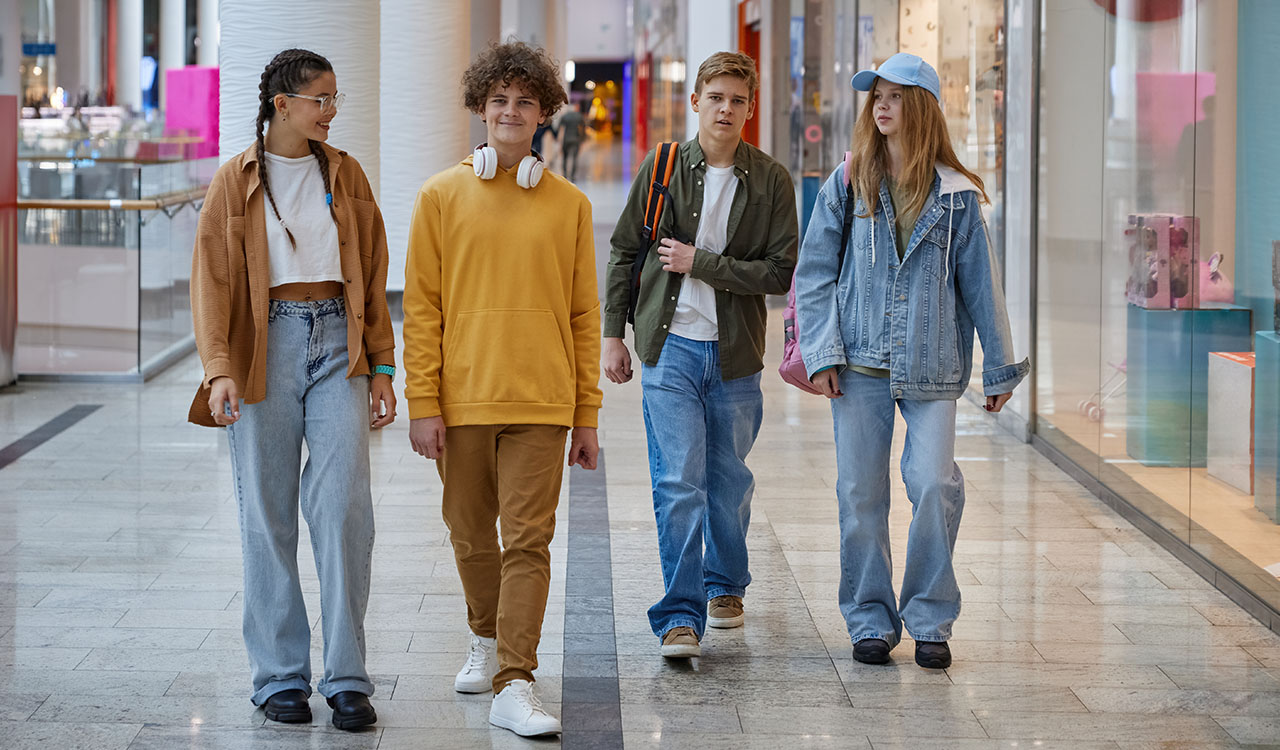Let me clear up an untruth: Millennials and Gen Z were never killing traditional shopping malls…boomers were. A 2024 study by Ipsos Consumer Tracker found that contrary to popular belief, only 38 percent of consumers in the 55+ demographic say they shop at malls “often or sometimes,” compared with 48 percent of those aged 35-54, and a whopping 58 percent of shoppers aged 18-34.
Salespeople are still being trained to approach and engage customers in a manner unbefitting of the times and unbefitting of what next-gen consumers are willing to tolerate.
But that’s not all: Consumers aged 18-34 were twice as likely as those over 55 to say they shop at malls “often,” while the oldest Americans were three times as likely as the youngest to say they “never shop at malls.” So, all of those romantic notions of boomers who are mall walking en masse to JC Penney don’t have legs to Jazzercise on.
We know that Gen Z and the youngest millennials are the biggest mall-attending demographic, but why? What do they want to see when they go to malls and what retailtainment incentivizes them to spend?
They Don’t Go to Malls for Low Prices
As much as we prattle on about how Gen Z seeks out low prices, it’s important to note that they don’t think they’re going to find those low prices in malls––which is a good thing because they aren’t. Consider that 72 percent of Americans think they can get cheaper prices online than in-store. And malls are the real estate hubs of brick-and-mortar shopping. However, next gens are willing to shell out a bit more for a noteworthy experience, whether that experience serves the purpose of creating a buzz on social media or just helps them get through the next few weeks.
The term retailtainment is grossly overused. Yes, immersive in-person mall events like “Netflix House” are massively exciting across age demographics. But such events are also one-offs and don’t comprise most in-person shopping experiences. The term ‘Souvenir Purchasing Mentality,’ coined by yours truly, far better encapsulates what next gens are actually buying on a weekly basis.
For young millennials and Gen Z, in-person shopping is either for consumable products like unique food items that create a flicker of serotonin or it’s souvenir-oriented––meaning the products they purchase are emblematic of in person experiences they want to remember. Retailers don’t always need to dress up their malls to look like the movie set of “Barbie” to get young spenders in stores. They do, however, need to create positive in-person experiences and sell somewhat affordable products that encapsulate those experiences.
Think of an art museum store, but with goods sold at lower price points and food options geared towards diverse dietary restrictions––vegan, gluten-free, organic. Think of a cinema selling lower price point perfumes inspired by the movies being shown. Think about what would spark joy for another week with $25 of discretionary spending.
Manufacturing “Chill Vibes” en Masse
Next gens want souvenirs of their in-person shopping experience, but first, that experience needs to be authentically enjoyable. Too many retailers renting physical storefronts are still focused on bottom-line product sales without thoroughly considering whether their stores and staff provide experiences worth having.
If you thought millennials were appalled by aggressive salespeople, you should see our younger siblings. To be fair, unwillingness to be sold to has become pretty universal since pandemic lockdowns––these days 83 percent of American adults don’t want salespeople to address them unless they initiate the conversation. So, why are salespeople still doing it? Many retailers haven’t updated their in-store training since the early aughts. They’ve removed the human touch from the process of training store associates, digitizing training materials, and in some cases even updating them to better reflect next-gen consumers. But salespeople are still being trained to approach and engage customers in a manner unbefitting of the times and unbefitting of what next-gen consumers are willing to tolerate.
Next gens are already overstimulated, and more young people self-identify as neurodivergent than ever before. Nobody is going to opt into an aggressive sales setting. Put simply, being approached by salespeople in any way is seen by prospective next-gen consumers as distinctly un-chill. You know what is chill? Mixed-use retail spaces with ample seating, relaxed lighting that doesn’t feel like an optometrist’s waiting room, and salespeople that have personal anecdotes to share about each product…when asked.
Diversity Without the Cringe Factor
When thinking about catering to diverse audiences in physical spaces, neurodiversity needs to be a consideration. I wrote about “Mixed-Use Retail Spaces for Millennials” back in 2020. But we aren’t talking about millennial HENRYs. (In fact, that now feels like the halcyon days––few millennials are still HENRYS, me included.)
We’re talking about creating spaces where overstimulated people can take refuge, spend time with family and friends, and experience joy on their own terms. This means multicultural food, NA beverages, and clean, accessible bathrooms. It means music that won’t induce a panic attack or worse, a seizure.
Malls aren’t dying, but those shopping centers experiencing a renaissance are shedding outdated sales tactics. Gen Z and young millennials want spaces that reflect how they feel and view the state of the modern world. They want food that fits their lifestyle, products that double as souvenirs, and environments where they can exist without being hassled. The future of malls is in creating spaces that feel good to be in. If that means fewer pushy sales tactics and more spots to sit and listen to soothing music with an oat milk latte, well, that’s a trade-off worth making.





